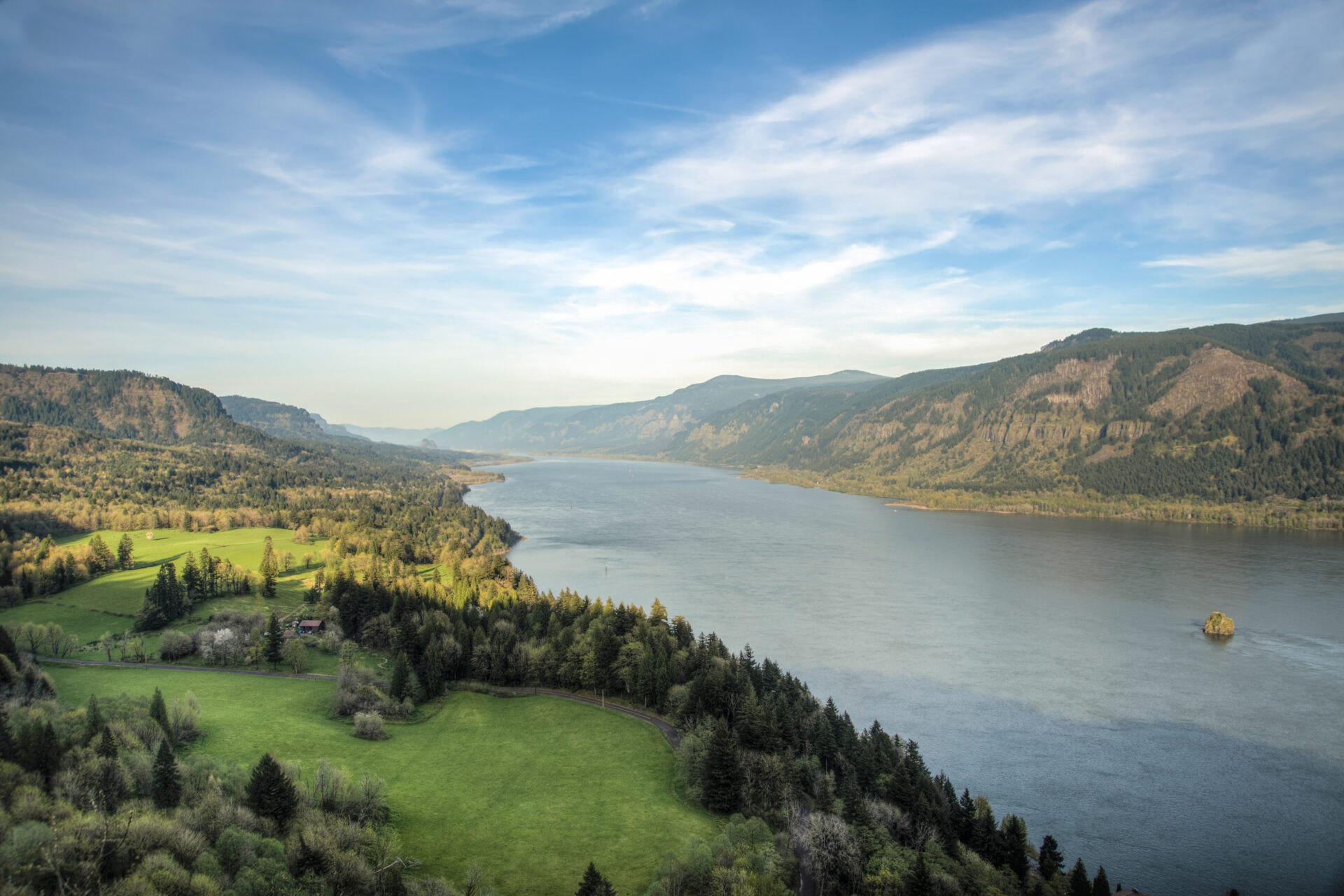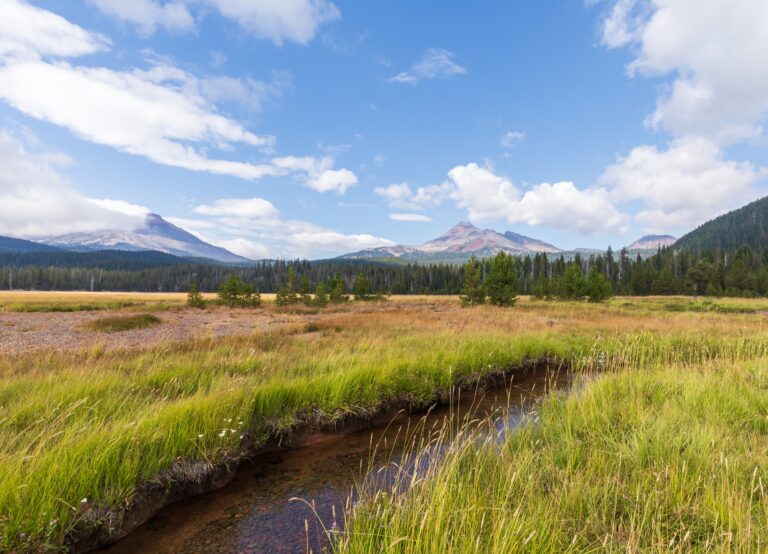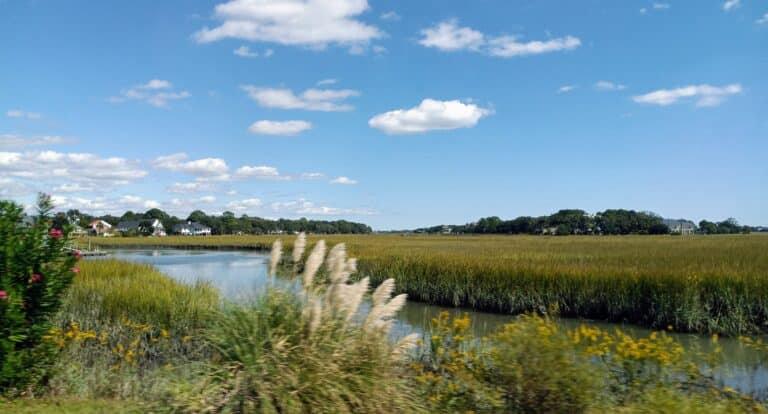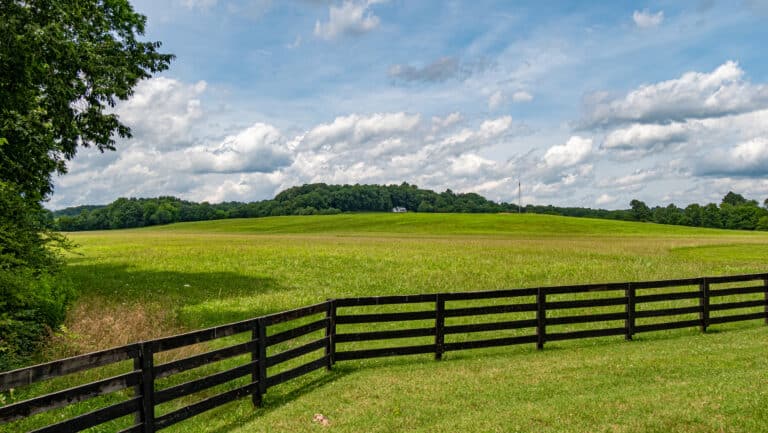Just shy of 100,000 square miles, Oregon is the ninth largest state in the nation, with a wide diversity of natural terrain to choose from. Whether you’re looking for space for a family home, a coastal getaway, an off-grid property, or anything in between, buying land in Oregon can be a fulfilling long-term investment.
Ready to own land in The Beaver State, but not sure where to start? You’re in the right place. In this comprehensive guide, we’ll break down how to buy land in Oregon, as well as practical considerations to ensure a well-informed and confident purchase. No matter your property goals, we’ll look at what sets Oregon land apart—and how to find the right fit.
From exploring acreage to closing the deal, here’s what to know when buying land in Oregon.
Why Oregon Is a Popular Choice for Land Buyers
One of Oregon’s biggest appeals is its range of diverse landscapes and stunning natural beauty. Across the state, you’ll find:
- Snow-capped mountains
- Rugged coastline
- River canyons
- Fertile farmland
- Timber forests
- Desert plains
All of this geographic contrast means that Oregon is remarkably well-suited to a wide variety of land needs and goals, especially if you love the great outdoors. Landowners can tap into local agriculture, hunting, or timber, plus enjoy recreational and investment opportunities.
This diverse terrain accounts for significant lifestyle land purchases. Packed with state parks and national forests, Oregon offers year-round natural recreation like hiking, camping, skiing, and more. It’s a great place for sustainability-minded buyers and outdoor enthusiasts, with easy access to nature practically anywhere in the state. For this reason, Oregon land draws families, weekenders, young professionals, and off-grid residents alike.
With so many unique landscapes and communities to choose from, it’s no wonder buyers often ask about the best place to buy land in Oregon—but the answer depends on your goals and the lifestyle you’re looking for.
Another perk of living in Oregon? There’s no sales tax. (The only exception is new vehicles purchased out of state). So, if you’re planning on renovating your property or making large purchases like farm equipment or construction materials, you’ll spend less money than in a state that collects sales tax.
Between these attractive reasons and rising net migration, Oregon has seen steady, measured population growth in recent years. In turn, job growth is projected to continue increasing, with opportunities in both agriculture and industry.
All in all, Oregon is a popular region for landowners, with an extensive variety of acreage to choose from.
Understanding The Land Types in Oregon
With such a wide range of terrain comes a multitude of options for buyers. In Oregon, land types include.
- Residential – If you’re purchasing a home, you’re in the market for residential land. This can also include undeveloped plots zoned for residential living, where you can build your dream house from scratch. Residential acreage commonly doubles as other land types, such as a farm with an attached homestead, or a weekend getaway cabin with outdoor recreation.
- Agricultural – Farming and ranching are billion-dollar industries in Oregon, which is home to about 40,000 agricultural properties. Over 220 different commodities are produced across the state, with top production in hazelnuts, grass seed, berries, onions, and Christmas trees. Plus, over 95% of farms and ranches are family owned and operated, creating a low barrier to entry for new agricultural landowners.
- Timber – Over 30 million acres of Oregon are forested—about half the entire state. Forestry is a significant and innovative industry in Oregon, which produces the most softwood lumber in the country.
- Recreational – Since Oregon’s natural landscapes are popular for outdoor activities, recreational land can be found all over the state. This includes land for hunting, fishing, swimming, skiing, camping, and more. Recreational land can be used in many ways and is often combined with other land types, such as a vacation home or tourist rental.
- Investment – All land is a long-term investment, but some acreage can be used solely to turn a profit. Investment land includes rental cabins, commercial property, and outdoor recreation businesses. You could also buy undeveloped land, build on it, and resell.
Ultimately, the right type of land for you depends on your budget and goals.
Benefits of Buying Land in Oregon
As a potential landowner, you likely already know that any acreage is an investment in your future. But buying land in Oregon brings a particular mix of advantages hard to come by in other states, even on the West Coast.
Three top benefits of being an Oregon landowner include:
Recreational Opportunities
We’ve already mentioned how Oregon’s diverse landscapes are perfect for activities and sports. When it comes to outdoor fun in Oregon, the world is your oyster.
In terms of water recreation, Oregon is a paradise—not only does it have miles of Pacific Ocean coastline, but it’s also home to over 6,000 lakes and 112,000 miles of rivers and streams, including Crater Lake, the deepest in the US. Swimming, fishing, kayaking, tubing, surfing—you name it, you can do it in Oregon.
Out of the water, Oregonians can enjoy year-round or seasonal recreation like hiking, biking, camping, skiing, snowboarding, and more.
Fertile Farmland
Oregon boasts millions of acres of farms and ranches, which contribute significantly to the state’s economy and exports. Across Oregon, a temperate climate and fertile soil create the ideal growing conditions for a number of crops. For instance, the Willamette Valley, where soil is fortified by volcanic ash and rainfall is plentiful, produces over 99% of the hazelnuts grown in the US.
Whether you’re interested in small-scale home farming or making a living with agriculture, Oregon has endless opportunities.
Sustainable Living Appeal
Oregon frequently tops lists as one of the most eco-friendly places to live in the US, based on metrics like clean air, water quality, CO2 emissions, and renewable energy. It has one of the lowest carbon footprints per capita in the country, and Oregonians recycle at about two times the national average. What’s more, the agricultural sector prioritizes sustainability and responsible stewardship, and over half of the state’s energy use is renewable.
Landowners interested in green living will enjoy Oregon’s numerous sustainable initiatives, such as:
- Waste reduction
- Energy-efficient construction
- Renewable energy
- Electric vehicles
- Green purchasing
- Recycling
From urban hubs to rural areas, Oregon is an eco-conscious state.
Key Steps to Buying Land in Oregon
So, you’re ready to purchase Oregon acreage—but where do you start? Simply follow this 5-step process:
- Make a clear plan – In order to choose the right property, you need to know exactly what you’ll use it for. Sit down and get organized on your budget, goals, and long-term plans in Oregon.
- Research properties – Start browsing land for sale in Oregon, narrowing down your options by factors like land type (residential, ranching, etc.) or whether or not a home is move-in ready.
- Understand financing – It’s okay if you can’t pay for a property out of pocket. Luckily, there are tons of financing options available when buying land in Oregon. You can explore traditional bank mortgages, credit union lenders, and owner financing, plus special farm loans offered by the USDA for agricultural land.
- Connect with a local agent – Streamline the buying process with the expertise of a land professional. Their experience with the local market, negotiation, and potential red tape makes them an invaluable resource when purchasing acreage.
- Close the deal – Once you’ve found your perfect property, there’s a bit of paperwork involved to close the deal (a land agent can help with all this). Before you know it, you’ll be signing on the dotted line.
Once the seller transfers the deed, you’re an Oregon landowner!
Important Considerations When Buying Land in Oregon
Part of the process of choosing the right property is evaluating relevant laws and practical factors in the region. Make sure to be aware of:
- Zoning regulations – Zoning laws determine what land can and can’t be used for. For instance, if a property isn’t zoned for residential use, you can’t build a home on it.
- Environmental protections – Land use restrictions in Oregon can limit owner rights in order to protect natural resources and promote conservation efforts.
- Access to water – In Oregon, all water is public. Property owners may apply for permits based on need, such as for irrigating crops, but it’s important to note that water rights are given on a first-come, first-served basis (aka prior appropriation). Make sure to research what water rights exist on your potential property before finalizing your paperwork.
Remember: Being informed is a crucial part of making a confident and successful land purchase.
Start Your Oregon Land Search with Land.com
Browse land for sale in Oregon on Land.com, the nation’s leading online marketplace for rural real estate. Between cattle ranches, family homes, oceanfront timberland, and undeveloped parcels, you’re sure to find the right fit among thousands of available listings. Plus, our advanced filters make it easy to narrow down your search by price, size, geography, land use, and more.
To enjoy expert insights every step of the way, connect with a local Land Pro in Oregon. Professionals who specialize in land transactions know what makes acreage a unique investment and can handle all the time-consuming parts of the buying process, like phone calls and negotiations.
Find your dream Oregon land today with help from Land.com.
Sources:
Oregon Tourism Commission. Oregon Fast Facts. https://industry.traveloregon.com/newsroom/oregon-fast-facts/.
Oregon Department of Revenue. Sales Tax in Oregon. https://www.oregon.gov/dor/programs/businesses/pages/sales-tax.aspx.
Oregon Public Broadcasting. Oregon’s population is growing, but at a slower pace than past decades. https://www.opb.org/article/2024/12/19/oregon-census-data-population-growing-slower-pace-past-decades/.
Oregon Department of Agriculture. About Oregon Agriculture. https://www.oregon.gov/oda/agriculture/pages/about-oregon-agriculture.aspx.
Oregon Farm Bureau. Oregon Agriculture. https://www.oregonfb.org/oregon-agriculture.
Business Oregon. Forestry & Wood Products. https://www.oregon.gov/biz/programs/homeareas/byboregon/targetindustries/pages/forestry.aspx.
Consumer Affairs. Greenest states in the U.S. https://www.consumeraffairs.com/solar-energy/greenest-states-in-us.html.
State of Oregon. Sustainability Description and Mission. https://www.oregon.gov/das/Facilities/Pages/Sustainability.aspx.
Oregon Department of Land Conservation and Development. Laws and Rules. https://www.oregon.gov/lcd/lar/pages/index.aspx.
Oregon Water Resources Department. Water Rights. https://www.oregon.gov/owrd/programs/waterrights/Pages/default.aspx.



